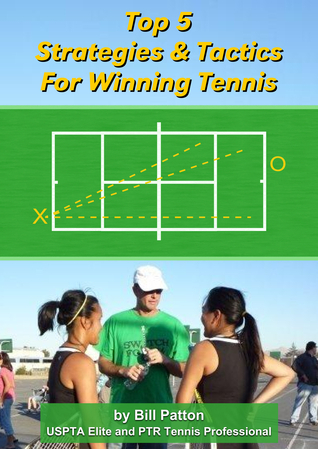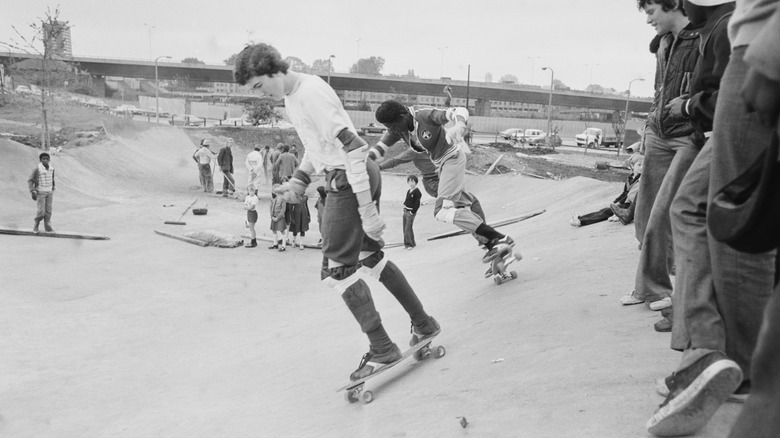
Top Strategies for Winning Tennis Matches: A Comprehensive Guide
Tennis, often dubbed a "physical chess match," demands more than just powerful serves and blistering forehands. It’s a sport where technical skill, tactical acumen, physical endurance, and mental fortitude converge to determine the victor. To consistently win matches, players must develop a holistic approach, understanding that every shot, every point, and every moment on court contributes to the larger strategy. This comprehensive guide will delve into the top strategies that can elevate your game from merely playing to consistently winning.
I. The Foundation: Mastering Your Game & Physicality
Before diving into tactical intricacies, a solid foundation in your own game and physical conditioning is paramount. Without these, even the most brilliant strategies will falter.
1. Technical Proficiency & Consistency:
At its core, tennis requires the ability to execute fundamental strokes reliably. This means having a consistent serve, groundstrokes (forehand and backhand), volleys, and overheads. Consistency is often prioritized over power, especially at club levels. A player who can keep the ball in play and force their opponent to hit one more shot will often win against a player who hits occasional winners but also a high number of unforced errors.
- Drill for Consistency: Practice hitting 10, 20, or even 50 consecutive balls over the net with a partner, focusing on depth and rhythm rather than pace.
- Vary Your Shots: Once consistent, develop variety. Learn to hit with topspin, slice, and flat. Understand how to change pace and depth. This variety prevents opponents from settling into a rhythm and makes your game less predictable.
2. Physical Conditioning & Endurance:
Tennis matches can be long and grueling, lasting anywhere from an hour to several hours. Superior physical fitness allows you to maintain high intensity, sharp focus, and optimal decision-making throughout the match, especially in crucial third sets.
- Cardiovascular Endurance: Regular cardio (running, cycling, swimming) builds the stamina needed for long rallies and matches.
- Speed & Agility: Tennis involves constant bursts of movement, quick changes of direction, and explosive sprints. Ladder drills, cone drills, and shuttle runs are excellent for improving footwork.
- Strength & Power: Core strength, leg strength, and upper body strength contribute to shot power, stability, and injury prevention. Incorporate plyometrics and weight training.
- Flexibility: Essential for range of motion, injury prevention, and efficient movement.
II. Tactical Brilliance: Outsmarting Your Opponent
Once your physical and technical base is solid, the strategic "chess match" truly begins. Tactics involve understanding your opponent, the court, and how to best deploy your skills.
1. Pre-Match Analysis & Scouting:
If possible, gather information about your opponent.
- Identify Strengths & Weaknesses: Do they have a weaker backhand? A dominant forehand? Are they uncomfortable at the net? Do they have a strong first serve but a vulnerable second serve?
- Movement Patterns: Are they slow to their forehand side? Do they struggle with wide balls? Are they prone to staying glued to the baseline?
- Mental Tendencies: Do they get frustrated easily? Do they choke under pressure? Do they thrive on momentum?
If scouting isn’t possible, a few games into the match should provide enough information to start formulating a game plan.
2. Play to Your Strengths, Exploit Their Weaknesses:
This is the cornerstone of tactical play.
- Leverage Your Best Shots: If you have a powerful forehand, construct points to set up that shot. If you have a great slice, use it to disrupt their rhythm.
- Target Weaknesses Relentlessly: Once an opponent’s weakness is identified (e.g., a shaky backhand), consistently hit balls to that side. Don’t be afraid to overplay it until they prove they can handle it. If they struggle with depth, hit deep. If they struggle with wide angles, open up the court.
3. Court Positioning & Depth:
- Regain Center: After every shot, recover to the center of the court (or slightly biased towards where your opponent is most likely to hit). This minimizes the distance you need to cover for their next shot.
- Control the Baseline: Generally, hitting deep shots pushes your opponent back, giving you more court to work with and reducing their angles of attack. Shallow shots give your opponent time to move forward and take control.
- Attack the Net (When Appropriate): Coming to the net can be highly effective, especially on shorter balls or when your opponent is off-balance. However, it requires good approach shots and solid volleys. Don’t rush the net blindly.
4. Shot Selection & Point Construction:
Every shot should have a purpose.
- Percentage Tennis: Especially in crucial moments, prioritize high-percentage shots (deep, cross-court) that minimize errors.
- Build the Point: Don’t go for a winner on the first ball. Use defensive shots to stay in the point, neutral shots to keep the rally going, and offensive shots to create openings.
- Angles & Width: Use angles (both sharp cross-court and down-the-line) to pull your opponent off the court, creating open space for your next shot.
- Vary Pace & Spin: Mix up flat, topspin, and slice shots. Change the pace from slow to fast. This keeps your opponent guessing and prevents them from finding their rhythm.
- Drop Shots & Lobs: These are surprise weapons. A well-executed drop shot can be a winner if your opponent is deep in the court. A deep lob can buy you time to recover or force your opponent to hit an overhead, which can be challenging.
5. Serve & Return Dominance:
These are arguably the two most important shots in tennis as they start every point.
- The Serve:
- First Serve Percentage: Aim for a high first serve percentage, but don’t sacrifice pace entirely. A good balance provides free points or immediate advantage.
- Placement & Variety: Don’t just hit it hard down the middle. Practice serving wide, to the body, and down the T. Mix up flat, slice, and kick serves to keep your opponent guessing.
- Target the Weakness: Serve to your opponent’s weaker return side.
- The Return:
- Aggressive Returns: On a weaker second serve, step in and attack, aiming to put immediate pressure on your opponent.
- Deep Returns: On a strong first serve, prioritize getting the ball back deep into the court, neutralizing their advantage.
- Return to Weakness: Just like groundstrokes, aim your returns to your opponent’s weaker side.
III. The Mental Edge: The Unseen Battleground
Mental toughness is often the differentiator between good players and champions. Tennis is inherently frustrating; managing emotions and maintaining focus is critical.
1. Focus & Concentration:
- Point-by-Point Mentality: Treat each point as a separate entity. Don’t dwell on past errors or think ahead to future points. Focus only on the current shot.
- Rituals Between Points: Develop a routine (e.g., bounce the ball a certain number of times, take a deep breath, visualize the next shot) to help reset and refocus after each point.
- Block Distractions: Learn to ignore external factors like crowd noise, bad calls, or even your own negative self-talk.
2. Emotional Control & Composure:
- Manage Frustration: Errors are part of tennis. Acknowledge them, learn from them, and move on. Don’t let a single error snowball into a series of mistakes. Avoid racket abuse or excessive negative body language, as this signals weakness to your opponent.
- Positive Self-Talk: Replace negative thoughts ("I can’t do this") with positive affirmations ("I can win this point," "I’ve practiced this shot").
- Body Language: Project confidence, even when you’re not feeling it. Stand tall, walk with purpose, and avoid slumping shoulders.
3. Resilience & Problem-Solving:
- Adaptability: Be prepared for your initial game plan to fail. A good player can recognize when a tactic isn’t working and adapt on the fly.
- Never Give Up: Even when down match points, the match isn’t over until the final ball. Fight for every point. Many matches are won by players who simply refuse to quit.
- Embrace Pressure: Instead of fearing pressure situations (break points, set points), view them as opportunities to execute your best tennis.
4. Confidence & Self-Belief:
Confidence is built through consistent, purposeful practice and positive experiences. Trust your training and your abilities. Visualize success.
IV. Match Management & Adaptability
Winning strategies also involve managing the flow of the match itself.
1. Managing Momentum Swings:
Tennis is a game of momentum. When your opponent has momentum, try to slow the game down:
- Take more time between points.
- Vary your serve pace.
- Hit higher-percentage, safer shots.
- Call for a ball change or towel.
When you have momentum, speed things up: - Play aggressively.
- Take less time between points.
- Maintain intensity.
2. Energy Conservation:
Don’t waste energy on unnecessary movements or excessive emotion. Use changeovers effectively to hydrate, rest, and strategize with your coach if allowed.
3. Dealing with Pressure Points:
Understand the importance of key points (30-30, break points, game points, set points). On these points, often revert to your most consistent, high-percentage shots. Avoid going for low-percentage winners unless you have a clear opening.
4. The "B" Game:
Sometimes, your "A" game isn’t there. A champion knows how to win even when not playing their best. This means relying on consistency, smart tactics, and mental toughness to grind out a win.
V. Practice with Purpose: Applying Strategies Off-Court
Strategies are only effective if they are practiced and internalized.
1. Drill Specific Scenarios:
Don’t just hit balls. Practice specific tactical situations:
- Down-the-line approach, cross-court volley.
- Serving wide, attacking the weak return.
- Forehand inside-out, followed by a backhand down-the-line.
2. Simulate Match Play:
Play practice sets where you consciously try to implement new strategies or exploit a partner’s weaknesses. Keep score and treat them like real matches.
3. Analyze Your Own Matches:
If possible, record your matches. Watch them back to identify recurring errors, missed tactical opportunities, and areas for improvement.
4. Work with a Coach:
A good coach can provide invaluable objective feedback, help you develop specific strategies for your game, and guide your training.
Conclusion
Winning tennis matches is a complex endeavor that goes far beyond raw talent. It demands a sophisticated blend of technical mastery, physical conditioning, astute tactical thinking, and unwavering mental strength. By diligently working on each of these areas – building a solid foundation, developing shrewd tactical plans, cultivating mental resilience, and applying these principles in purposeful practice – any player can significantly improve their win rate and unlock their full potential on the court. Remember, tennis is a journey of continuous improvement, and the most successful players are those who are always learning, adapting, and striving for excellence in every facet of their game.

![F1 Qualifying: A Thrilling Showdown Sets the Stage for [Grand Prix Name] F1 Qualifying: A Thrilling Showdown Sets the Stage for [Grand Prix Name]](https://sportsbase.io/images/gpfans/copy_1200x800/7bbb8f1ad44e947adf717f4d1afdc7a9bd255a06.jpg)

